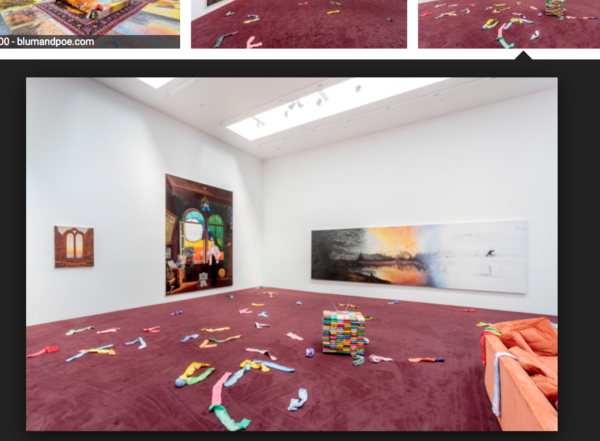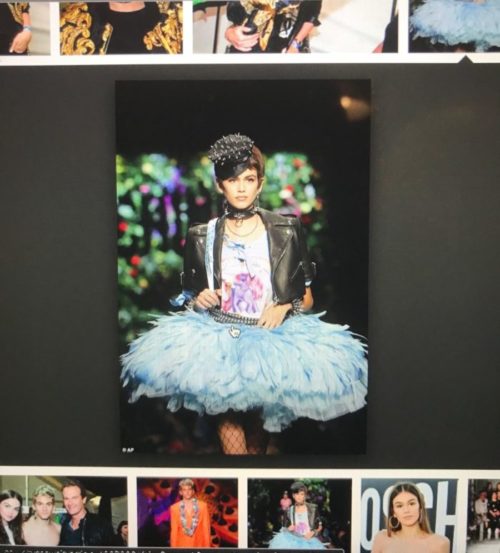Each month in 2015, we will post an interview with one of our alumni, as part of our celebrations of this year’s auspicious anniversary. The Courtauld’s History of Dress students have gone on to forge careers in a diverse and exciting range of areas. We hope you enjoy reading about their work, and their memories of studying here.

Sarah Brown, MA (2013)
Sarah Brown is a recent alumnus of the History of Dress MA. After working for Lord Snowden during her degree, she went on to work as a Project Assistant for Lord Snowden for a recent publication of his photographs. She went on to be an assistant at the Condé Nast archive and library, and is now an International Permissions Coordinator for Condé Nast.
You graduated fairly recently in 2013, do you miss the student life and the Courtauld?
I definitely miss student life at the Courtauld and being surrounded by like-minded people. I miss learning new things and the ability to go to exhibitions during the day – instead of on the weekends with the rest of London!
Having studied art history as an undergraduate, did you find there was a difference in mentality and discipline between history of art and history of dress?
I think I expected there to be a bigger difference than there was. History of art provided me with the perfect foundation to studying history of dress – in the sense of analysing an object, considering its historical context and relevance. However, I do think I approached history of dress in a much more interdisciplinary way. I was using sources and theories from sociology to anthropology to magazines, newspapers and films – and I loved the sense of freedom that it gave me. For me that was probably the main difference, that I could draw on a wider range of approaches.
Were fashion and the history of dress always of interest to you, or was it something entirely new to you?
History of dress was new to me in terms of studying it but not in terms of admiring and being fascinated by it! That all started when I was three years old and obsessed with the film Singin’ in the Rain. I was enthralled by the costumes and used it as my inspiration for any fancy dress game or party as a child. This extended into other ‘Old Hollywood’ films from the ‘40s to ‘60s, and when I was around 11 years old I discovered Vogue and found out the fashion world existed.
What was your favourite aspect of the course; do you have any particularly fond memories of your time at the Courtauld?
My favourite aspect of the course was visiting archives, such as the dress archive with Beatrice Behlen at the Museum of London. I loved analysing and studying actual garments, as there is only so much you can get from studying from an image or a description and it helped to bring the course to life. My fondest memories surround the people I became friends with at the Courtauld, from chatting too nosily in the library (or pub) to visiting exhibitions together. I learnt a lot from people who were not on my course – everything from 17th century Dutch art to digital and internet art, all just from chatting to people.
Have you remained in contact with the Courtauld and in particular the History of Dress department?
I have through the alumni network such as attending drinks and the summer party. I recently got to see Rebecca Arnold, which was really great, and just speaking with her reignited my passion for the subject. And I still go to fashion/ history of dress exhibitions with a friend from my course.
As a recent graduate of the Courtauld, what have you been up to since graduating?
After graduating I was straight into working as Project Assistant on a book about Lord Snowdon’s life and career as a photographer and designer. Once the book was completed early last year I worked in the Condé Nast archive and library as an assistant. My duties varied from scanning Cecil Beaton negatives and prints (it was amazing to see how he cropped and retouched the photographs and how many images he took before the final published shot) to research on the Vogue books (I researched for Shoes, Hats and Bags). I also undertook research on photographers, such as Clifford Coffin and John Deakin. I then had a brief stint at the Courtauld! I came back as the temporary events coordinator and it was great to see how the university and gallery works behind the scenes. So I have been all over the place and have learnt so much from all my different experiences, colleagues and tasks. I am now settled back at Condé Nast in the UK Permissions office.
You mentioned the photographer Lord Snowdon, what was your role working for him, and while there did you uncover some hidden gems within his archive?
I started out working on behalf of Snowdon in the Vogue archive – whilst I was still at the Courtauld. One day a week I would go and look through volumes of Vogue since the 1950s, sourcing his work that was published in the magazine. After graduating, I moved on to being the Project Assistant on the now published book Snowdon – A Life in View. It is an amazingly curated book looking at his career as a photographer and designer and includes ephemera and never before seen photographs, and largely looks at his work for Vogue in the 1950s and 1980s. I did everything from the scanning of the ephemera and Polaroids to writing the captions, fact checking and liaising with the designers, photo agencies and high profile contributors. I constantly found hidden gems whilst working in the dark room and studio, some of my favourites were the Polaroids from the 80s – one of an unrecognisable Tilda Swindon with a mane of curly golden hair! Other gems include letters from Diana Vreeland and the Queen.
You also mentioned the Condé Nast archive and your dissertation was on the ‘Worktown’ series of photographs by Humphrey Spender. Is it safe to say that photography and the role of dress in photography is of interest to you?
Absolutely! It is an ever-growing interest. I would love to study the role of dress in photography more and it is usually where I start my analysis of any photo; even if there is no people or clothes in the image I can comment on the absence of the clothes and the significance of that.
Can you talk about the photographers and images that have sparked your interest?
How long have we got? It all started with my undergraduate dissertation of August Sander and his photographs that were to be a typology of German people during the Weimar Republic. My thesis centred on his photograph Painter’s Wife. Her androgynous nature and return of the gaze, her almost aggressive stance, modern baggy, white outfit and slicked back hair intrigued me. I managed to write a whole thesis around this image and realised I wanted to continue studying photographers. Also my interest in the relationship between dress and photography probably stems from first seeing Lee Miller’s work, whilst I was an undergraduate, and being intrigued about how she could be a wartime as well as fashion photographer. Other photographers that have sparked my interest are Saul Leiter and his early colour work, Margaret Bourke White, Edith Tudor Hart, Martin Munkacsi and William Klein.
Now you’ve recently started in a new role at Condé Nast. How are you finding it?
Very interesting! I get a real insight into how the magazines are run and all the business factors that go into making them run smoothly. I deal with all the foreign editions of Condé Nast magazines, from Vogue Germany and Vogue Australia to GQ Taiwan and Glamour South Africa. I also still get to go to the archive and do research on the Vogue books and syndication requests. I love working with the international Condé Nast titles, despite not being able to read most of them. It has given me a much wider appreciation of how countries interpret the trends they see at fashion weeks and still incorporate their own style or take on them. In particular I love the fashion shoots in Vogue Italia and Vogue Korea.
Working at Condé Nast, do you feel a pressure to dress well or in a certain way for work? (By which I mean, are all the stereotypes and clichés surrounding fashion and lifestyle publications true?)
When I first started working there all I could think about was ‘what an earth am I going to wear?’ but I was put at ease immediately. There are some people who are dressed very fashionably or stylishly – which I love as you get a source of inspiration just walking down the hallway. But it is very relaxed and doesn’t play up to those fashion clichés. You can pretty much wear what you want, from smart work wear to a billowing pink skirt to jeans and trainers. So I usually dress for my mood.
Have you found that the course has shaped your career trajectory or was this always your intention?
In a way the course has completely shaped it. It was always my intention to work in fashion or dress history but I did not see it as a realistic or possible option – and the course changed that. What it taught me is that there is a whole world belonging to the history of dress and that you can get jobs in it or find different pathways that can take you there one day. The course has given me a sense of confidence that if you work hard and have passion for the subject, a career in the history of dress is possible – I couldn’t have asked for more really.
Do you have any further ambitions or goals, in either your career or personal life?
Oh yes – I guess my main goal is to be respected and distinguished in my field, which would hopefully be the history of photography and dress. Writing more for dress and photography magazines and publications would be a dream, as would becoming a curator. But right now I am focusing on the present and I am just making the most out of my current job.
If you could own one item of dress, from any period in history or by any designer, what would it be and why?
The piece that first came to mind is the Christian Dior ‘Junon’ dress from 1949. It was the first piece of clothing I ever wrote an essay on (when I was fifteen in art & design) and it has always stuck with me as it is when I realised how much I loved researching and writing about dress history. The dress has a full skirt that is covered in sequins and beads and it seems to embody the glamour and grandeur of the era of haute couture and ‘Old Hollywood’, yet it doesn’t look far from a Vivienne Westwood or Alexander McQueen design – showing its timelessness.
Do you have any words of wisdom for any current or future History of Dress students?
Live in the moment. Throw yourself into the course and you will get so much out of it. Enjoy being able to devour books in the library and always pick essay and dissertation topics that you are passionate and excited about. Even try and get an internship whilst you’re studying and stay in touch with curators you meet and each other, and, most importantly, listen to Rebecca!






























